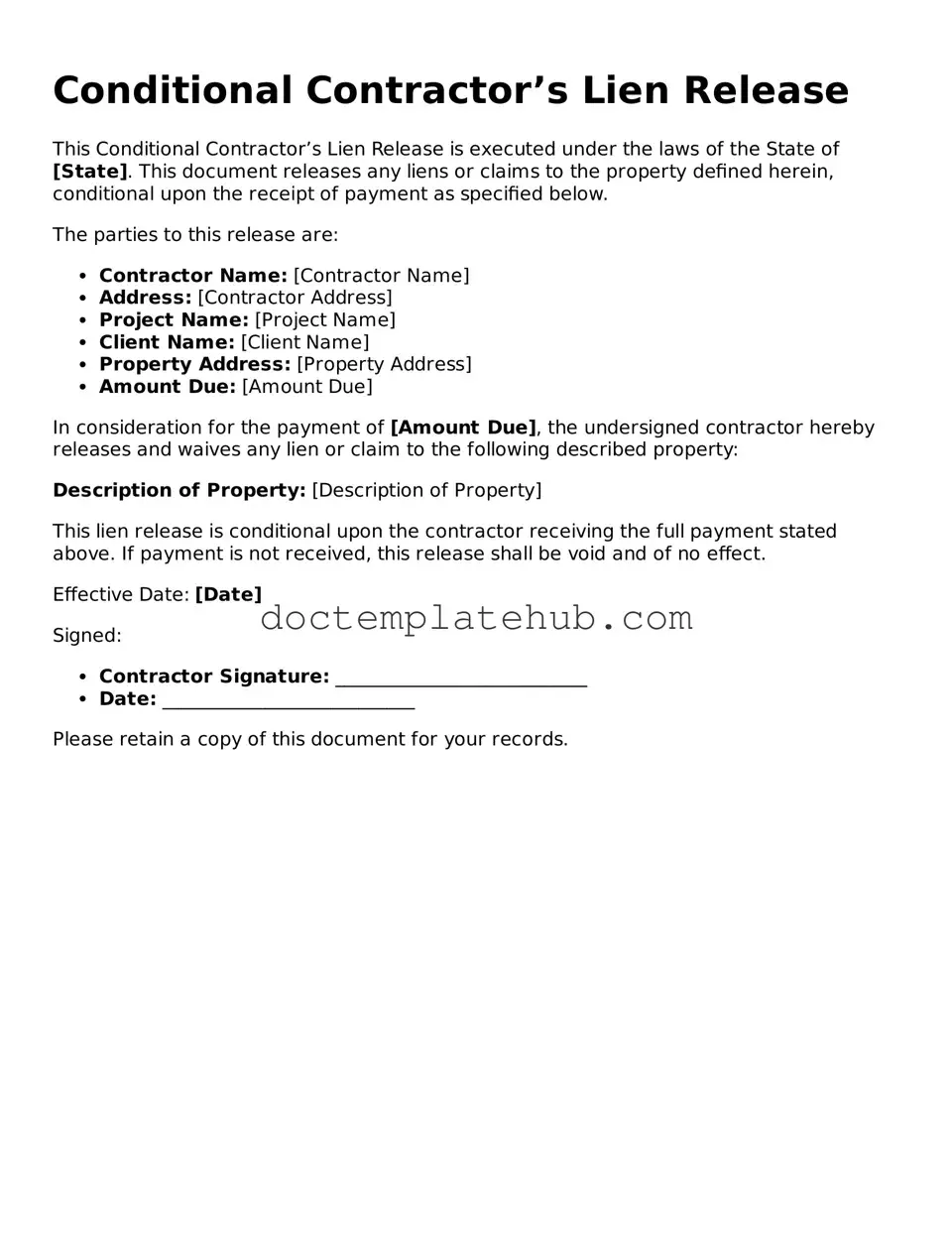What is a Conditional Contractor’s Lien Release form?
The Conditional Contractor’s Lien Release form is a document used by contractors, subcontractors, or suppliers to release a lien on a property conditionally. This means that the release is dependent on the receipt of payment. The form is typically used in construction projects to ensure that all parties involved understand the payment conditions and that the property owner is protected from future claims related to unpaid work or materials.
When should a Conditional Contractor’s Lien Release form be used?
This form should be used when a contractor or subcontractor has completed work or provided materials for a project but has not yet received payment. By submitting this form, the contractor indicates that they are willing to release their lien rights, provided they receive the agreed-upon payment. It is a common practice in the construction industry to use this form before payment is made to ensure that all parties are clear about the terms of the release.
What information is typically included in the form?
The form usually includes the names of the parties involved, a description of the property where the work was performed, the nature of the work or materials provided, and the amount owed. Additionally, it will specify that the release is conditional upon receiving payment. Some forms may also require a signature and date to validate the document.
Is a Conditional Contractor’s Lien Release form legally binding?
Yes, the Conditional Contractor’s Lien Release form is legally binding once it is signed by the appropriate parties. It serves as a formal acknowledgment that the contractor or subcontractor is relinquishing their lien rights, contingent upon the fulfillment of the payment condition. It is advisable for all parties to keep a copy of the signed document for their records.
What happens if payment is not received after submitting the form?
If payment is not received after the form has been submitted, the contractor retains the right to file a lien against the property. The conditional nature of the release means that the contractor can still pursue payment through legal means, despite having submitted the release form. It is important for contractors to follow up on payment and understand their rights under the law.
Can a Conditional Contractor’s Lien Release form be revoked?
Once the Conditional Contractor’s Lien Release form is signed and submitted, it cannot be revoked unless the parties involved agree to do so in writing. If the payment condition is not met, the release does not prevent the contractor from asserting their lien rights. Therefore, it is crucial to ensure that all terms are clearly understood before signing the document.
Where can I obtain a Conditional Contractor’s Lien Release form?
A Conditional Contractor’s Lien Release form can often be obtained from legal stationery stores, online legal document providers, or through a construction industry association. It is important to use a form that complies with the laws and regulations specific to the state where the property is located. Consulting with a legal professional may also be beneficial to ensure that the form meets all necessary requirements.
